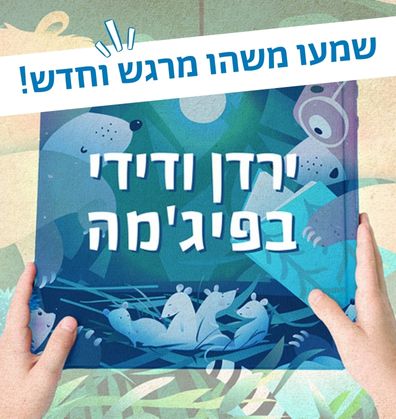סְּפָרִים
Book-Related Family Activities

One “Language” at Home – Another in Kindergarten
This book exposes children to an exciting period in history, and invites a discussion of their feelings in day-to-day situations. You can discuss with your children and ask: Why was Milka concerned and indecisive on the night before Baron de Rothschild’s visit? What do you think of the choice she made? Are there rules in kindergarten that differ from the ones you have at home too? Which ones?

How Do We Say it in Hebrew?
to the page containing the words that Mr. Yudilovitz, the teacher, sent to his friend, and try to pronounce them, or even use them in a sentence: “Can you pass me the Handtuch, please?” How about thinking together about all the non-Hebrew words we use in our daily lives and what their Hebrew alternatives are? You can try to invent new Hebrew words together too.

Looking for the Donkey
Have you noticed the grey donkey that appears in almost every illustration? The illustrations in this book are full of details, color, and text. You can pause on each page, look at the illustrations, and discover the things that interest you, while searching for the little donkey that accompanies this entire story.
Listen to the Story
Would you like to hear Milka speak Hebrew? Scan the code and listen to this book on the Sifriyat Pijama podcast.
A discussion on choosing and investing
You may want to discuss Cyril and Tevye’s choice: Why do you think they chose not to use all the gold? Did that surprise you? Why, in your opinion, did they decide to invest the gold in schooling?
Illustrations – Where is the goat?
The goat is by Cyril and Tevye’s side throughout the book. You may enjoy looking for the goat in the illustrations: What is it doing? What is its connection to the family? How about trying to tell the story from the goat’s point of view? What happens to it as the book progresses?
A game of treasure hunt
Gather several small gifts that you would like to give your family: A drawing, greeting card, or item. Take turns hiding your gifts and having the rest of your family look for the treasure using clues: “Near and far”, “hot and cold”, or arrows placed around the house.
Listening to a story
האזינו לפס הקול של הספר!
If you scan the QR code, you will be able to hear the soundtrack of the story. You can listen to it together at home, while traveling, or anytime and anywhere you choose.
A discussion on stories that “once were”
Following this book, you could also raise memories and tell stories that “once were” – a childhood story of yours, parents, or one told by Grandma or Grandpa about the old days.
Listening to the story
You could listen to the story together or separately; all you have to do is scan the QR code and… let the magic begin!
Suitable for families of Olim too.
Look how we have grown!
The tree grew, as did Rebecca. And how about you? Perhaps you would enjoy watching videos and looking at photographs to see how both children and parents have grown and changed. You could even discuss the kinds of actions that your children were able or unable to do in the past.
Orange sponge cake
Would you like to bake a cake? All you need are two eggs, one third of a cup of sugar, one third of a cup of oil, half a cup of fresh orange juice, a cup of flour (or substitute) and one teaspoon of baking powder. You could also add the grated zest of half an orange.
Mix all the ingredients in order and place in an oven preheated to 180 degrees Celsius. Bon Appetit!
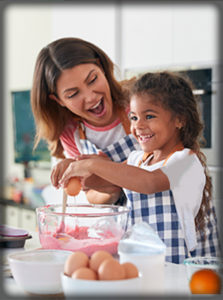
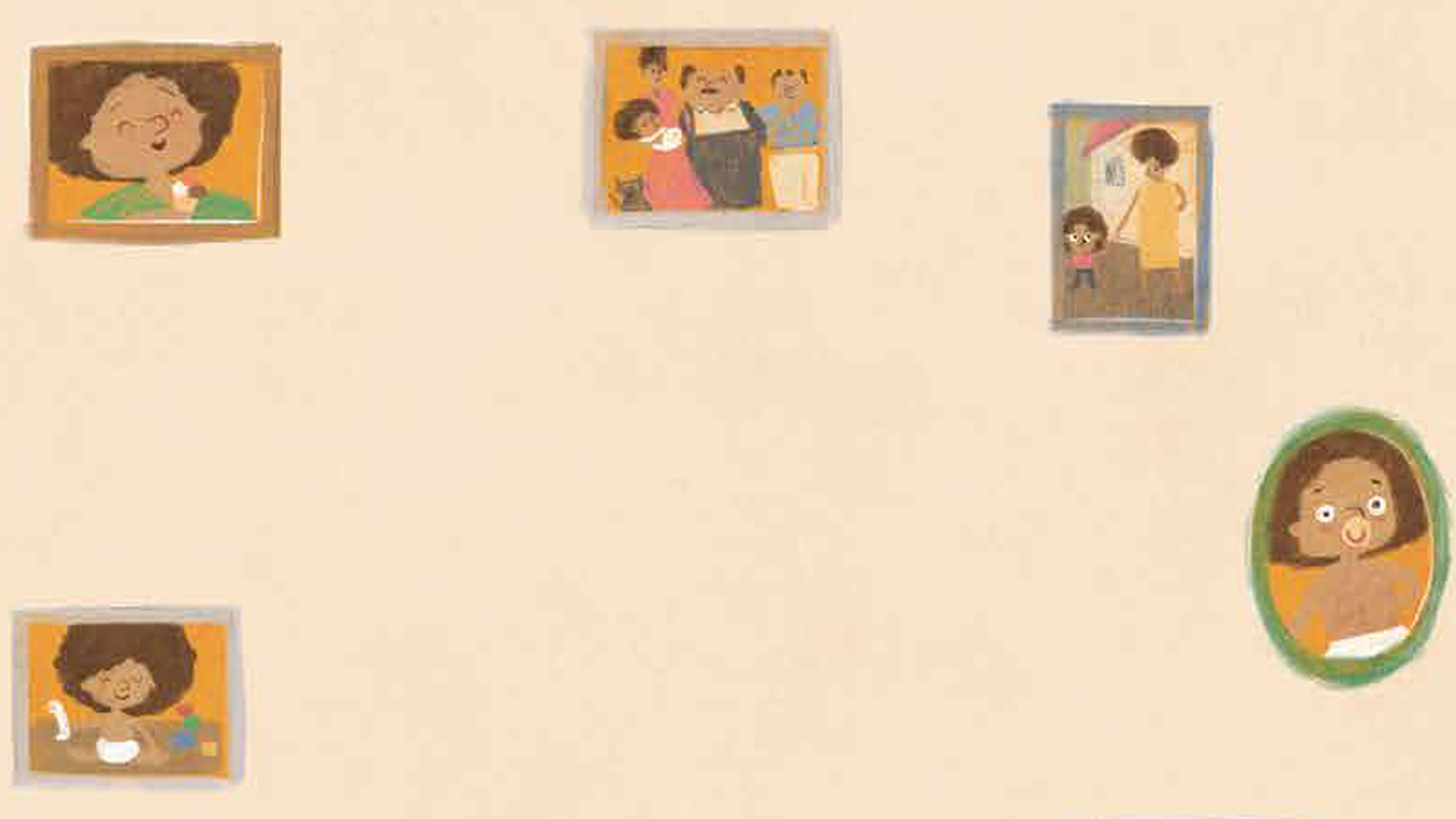
Discussing – Names and stories
Who likes their name? What is the story behind your family members’ names? Are there other family members who have the same name? or strange names? Are you named after anyone? You may want to do some research among your extended family. Who knows the stories you will uncover…

Observing – Where is Arie?
Shahar Kober’s illustrations invite us to follow Arie, and join him as he enters his family story. Can you find Arie in the different pages of the “Book of Aries”?
You may enjoy looking at old family photos of events that happened “once upon a time”: look through the pages of a photo album together, listen to the stories behind the events depicted in them, and choose one photograph you wish you could enter.
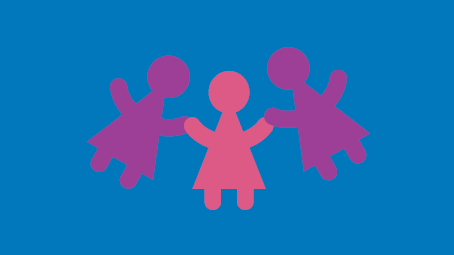
Doing some arts & crafts – A family book
How about creating your own family book, an album that will tell your story and that of your children, just like the Book of Aries in this story. Take a blank notebook, and collect stories from your grandparents, aunts, and uncles. Write down their memories from the time you were babies, funny words you said, or some special behavior. We recommend collecting such stories about both parents and children in your family. You should put in old photos and mementos from kindergarten, daycare, and the time when you were tiny babies.
Proposed Family Activities:
- You may want to look at the table of contents, choose a different idiom each time, and read the story that demonstrates it. Perhaps you could pick your favorite one, tell your child when you use it, and why you are so fond of it. If there is an idiom that your child particularly likes, ask them to tell you when they use it, and why they are so fond of it.
- The illustrations in this book are amusing, as they are a mixture of realistic and imaginary elements. You too could collect your favorite proverbs, illustrate them, and create your own family book of proverbs and idioms.
- How about playing a form of charades? You could each pick an idiom, and act it out. Were others able to guess which one you chose?
- Was your child familiar with the proverbs and idioms in the book before reading it? Do you and your child know any other expressions? Perhaps there are unique ones, whether in Hebrew or other languages, that are used by your family members? You could visit your grandparents, or uncles and aunts, and ask them to teach you a new proverb.
- You may enjoy making up your own idiom. Were you able to come up with one? If so, please send it to us, at pjisrael@hgf.org.il
“All good things come to an end” – this book celebrates the completion of five years of friendship between your family and PJ Library. We hope you have enjoyed reading the books you had received together, and wish your children many more years of joy reading books!
read this book together
You may want to read this book together, pause, and ask your child to tell you what they think is happening at that point in the story. How far along were you when you figured out where the grandmother and grandson were going, who the people in the black suits were, and what their cases contained?
• The grandmother and grandson in this book are spending time together
The grandmother and grandson in this book are spending time together. A special connection is often forged between children and their grandparents, that is unlike the relationship between parents and children. Can you recall a special time spent with your grandma or grandpa? You may want to share your childhood memories with your child, and discuss their relationship with their grandparents, aunts, or uncles.
playing a game
The authors depict the concert in the sand through a detective story, in which the grandmother does not tell her grandson where they are headed. Having read the book together, you may want to suggest playing a game in which your child will take you somewhere without disclosing your destination. Your child can prepare clues along the way, much like a treasure hunt.
What kind of music do you like listening to?
During the first concert, the orchestra played pieces by Schubert, Brahms, Mendelssohn, and others. What kind of music do you like listening to? Does anyone in your family play a musical instrument, or is learning to play one? Having read this book together, you may also enjoy attending a concert together, or even holding one of your own at home. There are many roles to be played at a family concert – musicians, conductor, and audience.
Bronislaw Huberman
Not too many people know the story of Bronislaw Huberman. Numerous men and women have been courageous and done great deeds for which they have not become famous. Perhaps you can think of another historical figure that you have heard about or known personally, whose story you would like to share with your child. You could even make a short storybook about them, and send it to us.
Reading differently:
Reading differently: Reading poetry and prose are different experiences. The nursery rhymes in this book are short and catchy, and are accompanied by Shulamit Tzarfati’s joyful and colorful illustrations. You may want to ask your child to leaf through the book, picking a different rhyme each time. As you re-read the book, your child will become familiar with the words, and recite them on their own.
Singing together
Singing together: Some of the nursery rhymes in this book have been put to music. If you do not know the tunes, you could look them up on the internet, listen to them, and sing along with your child. You could also accompany your singing with simple musical instruments: a tambourine, bell, harmonica, or even two wooden spoons.
Putting on a show
Putting on a show: You may want to suggest that your child use some toys and stuffed animals to act their favorite rhymes out. You may also enjoy adding some choreography: riding a broomstick while singing “Parash” [Horseman]; setting up a pots & pans band and dancing around to “Makhelat Nognim” [The Band]; or flying like butterflies in the footsteps of “Haperach Laparpar” [The Flower to the Butterfly].
For the chain continues yet
For the chain continues yet: Do you remember any songs you learned as children? After reading this book, perhaps you could try to remember songs you once knew off by heart, sing them, and introduce them to your children too.
Hayim Nahman Bialik
Hayim Nahman Bialik (1873–1934) – Israel’s national poet
Hayim Nahman Bialik, one of Hebrew Literature’s greatest contributors in the Modern Era, has greatly impacted Modern Jewish culture. Bialik wrote stories and poems for both children and adults, many of his publications were translated into various languages, and a fair share of his poems put to music. His lifelong achievement was building a bridge between the Hebrew preserved in Jewish literature for thousands of years, and the language reborn at the turn of the 20th century in Eretz Israel.
Proposed Family Activities:
- Unlike a story, poem collections may be read in any order we choose. Which poems do you and your child like best? You could read them over and over again, look at the illustrations together, and ask your child to pick a different poem each time.
- You may want to discuss being wet with your child: do they like to get wet? Can we manage without water? How does our family help save water?
- You may enjoy going on a puddle-and-squirting walk. Don’t forget your boots and umbrellas! When you are dry again, return to this book and read some more wet poems.
- Sometimes the rain keeps us from going outside. You may want to prepare a game box for rainy days. Ask your child to decorate an empty shoebox, and fill it up with little surprises: stickers, crayons, bubble-making tubes, and illustrated notes with ideas for family activities on rainy days (word games, book reading, baking etc.). Hide the box, and only open it when it rains!
- Has the first rain fallen yet? What will our rainfall be this year? Your child can be wait for the rain and monitor it by making a rainfall calendar with you. Every evening in winter, draw the appropriate drawing if it had rained that day. At the end of the season, you could count how many days of rainfall there were.
- Do you know any other story or poem about the rain (such as Mira Meir’s Shluli, Magafayim by Miriam Roth, or Ruth Kalderon’s adaptation of Sippur al Geshem)? You may want to look for them at home or at the library, curl up together in a warm (and dry) spot, and read them.
Did you know where the name Sabich originated before reading this story?
What do you know about your own family members’ names? Are they biblical? Are any of you named after a relative? Perhaps, like Sabba Sabich, your name or your child’s comes from a foreign language? You may want to discuss your names, their origin and meaning together, and tell your child what made you choose their name for them. Perhaps your child would enjoy making a decorated sign with their name on it, and hang it on their bedroom door.
Sabba Sabich came to Israel from Iraq. Where did your family come from?
How long has your family been living in Israel? Which country did it come from? Perhaps you could make a world map, and draw arrows on it denoting the path travelled by your family until their arrival in Israel. You may wish to share your own immigration stories with your child, or those of their grandparents. What did you like about the country you came from? What do you like about Israel? What sort of hardships and successes did you experience? Has any member of your family changed their name upon arrival in Israel?
Sabba Sabich says each community brought with it "a language, songs, names, and traditions"
You may want to teach your child a few words in the language spoken by their grandparents. Together you could recollect special customs and songs, which you could teach and sing with your child. They could also read this book with older members of the family, such as uncles, aunts, or grandparents. Perhaps by doing so they will be told more family stories they had not heard before.
Do you make Sabich for breakfast?
Pizza, falafel, kreplach, Jahnun... Which dishes are typical of your community? You may enjoy preparing a special meal together consisting of dishes typical to your family’s place of origin. You could teach your child how to make traditional food, and even create a family cookbook.
Keren and Or in making Sabich together!
Ingredients for home-made Sabich
- Hard-boiled eggs
- Sliced, fried eggplant
- Finely chopped salad
- Pitta bread
- Hot sauce (Schug), Amchur (Amba) (optional)
- Hummus
- Tahini
Method:
Peel the eggs (ask your child to look for the description in the book!), place one pitta bread on a plate and put hummus on it, with or without hot sauce (schug) or amchur (amba). Add the eggplant, sliced egg, and salad.
Season with salt and pepper, and put a spoonful of tahini on top.
Bon Appetit!
Enjoy reading and discussing the book together!
Leah Goldberg
Leah Goldberg (1911-1970), born in Kovno, Lithuania, was a poet, author, and translator. She studied at the universities of Berlin and Bonn, and received a PhD in Semitic Linguistics at the age of 22. Two years later (in 1935), she made aliyah to Israel and established herself as a renowned poet. She edited and wrote children books, including Where Is Pluto?, Apartment for Rent, and many others which have become classics of Israeli literature. Goldberg also headed the Comparative Literature Department at the Hebrew University of Jerusalem. In 1970, she was awarded the Israel Prize for literature, but unfortunately passed away two months before the prize ceremony. Her mother accepted the prize in her name.
Family Activity:
- Gad feels that there is a “naughty boy” inside of him that is making trouble and irritating him. Discuss together: Is there really a “naughty boy” inside of him?
Who swears at the auntie and pushes Yocheved: Gad, the “naughty boy”, or both of them together? Where is the “naughty boy” when Gad is not angry? What do you think?
- The illustrator Danny Kerman chose to represent the “naughty boy” by drawing a small shadow of Look at them both (Gad and the “naughty boy”). What is the “naughty boy” doing when someone is angry with Gad? Choose one of the illustrations and make up a “shadow conversation” between two characters, using your hands: Shine a bright light on the wall, using a lamp or flashlight. One of you will make shadows with your hands as if you were the “naughty boy”, and the other will respond as if they were Gad.
- The adults are upset with Gad: Father says he is acting like a baby, Yocheved’s mother calls him a “savage”, and Grandmother is so angry her nose turns green. What do you think about the behavior of the adults who talk to Gad?
- Discuss with your child an incident when you could not overcome your anger. What can one do in order to prevent this? If we are angry, how can we deal with the consequences of this feeling?
- Gad says: “I have tried everything… in order to make the ‘naughty boy’ go ” There are seven illustrations in the book that describe Gad’s attempts to deal with the “naughty boy”. Look at these illustrations and try to identify how he is dealing with the “naughty boy”.
- Gad asks: “What shall I do with him, with the ‘naughty boy’?” Like Gad, we all have urges and habits that we are not proud Choose a habit that you would like to overcome and in this way become a hero or heroine! Make a “Badge of Bravery” to award the heroes (e.g.: a medal, crown, sticker, etc.) and award it to the children when they overcome their urges and behave maturely.
- The “naughty boy” is often troublesome, but he also has some good characteristics: courage, independence and a strong will. Surprisingly, he even knows how to dance! Inside the book cover there are a series of illustrations of the “naughty boy”. When one looks at them in sequence, it seems as though the “naughty boy” turns his anger into dancing. You’re welcome to dance with him. Choose a few moves for the children to do and create a little dance. You can sing or drum to accompany the dancing.
Activities in the Family
- Follow the worm to tell the story: A little worm is hiding in the illustrations on each page of the book. It accompanies the flock of chickens on their journey to find food and watches what happens. Look for the worm. (You may give hints to children who have difficulty in finding it.)
You might want to use your finger as a “puppet” that talks to the worm about what it sees. You can even draw a little face on your finger and “befriend” the worm.
- At the end of the story the chicken and the fox meet. Look at the illustrations that depict their encounter. Notice the facial expressions of the chicken and note what happens to the fox’s tail. Taking an idea from comics, cut out six “conversation balloons”. Using a bit of masking tape attach the “balloons” to the illustrations of the chicken and the fox. Inside each balloon write what the chicken said to the fox and what he answered her. (Parents: Use as little masking tape as possible in order to protect the book.)
- We part from the brave chicken as she watches the fox run away. In the distance you can see the flock of chickens. They still don’t know that their little friend has saved their lives! It would be interesting to imagine what they do when they learn what occurred. You can act out the meeting between the wounded chicken and her friends by putting on a puppet show. You can make the puppets from cloth material, from boxes or from drawings cut out and pasted to wooden sticks. You can even include the “hidden worm” as the narrator of the story.
- It is very difficult for the chicken to walk. She can’t even manage to hold a stalk of grain in her beak like the others. But when the fox threatens her, she turns her weakness into strength. This is her “hour”. Tell or draw a true or imagined story about someone who has his or her shining “hour”, an event that changes them from someone who is weak into someone who is strong.
- The chicken has one weak leg. That’s why she needs the help of a crutch. Do you know a person or an animal that has a physical weakness? Discuss with your children what can help those who have trouble moving, hearing or seeing. Look for such examples in your neighborhood (special parking places designated for the handicapped, sign language for the deaf on news programs, floor numbers in an elevator embossed in Braille, etc.).
There are even special bills of money that are particularly suited for people who have difficultly in seeing. Look at two different bills of money of differing denominations. Close your eyes and feel the bills, and you will discover a protruding sign that helps people with poor vision “read” the bills and differentiate between them.
The chickens' "Exodus from Egypt”:
Throughout the story “The Chickens and the Fox”, Bialik provides hints to stories of our forefathers in the Bible:
The flock of chickens leaves its dwelling place during a year of drought and hunger and arrives at a place where there is food. Once they have satisfied their hunger, the leader gathers them together and asks them to quickly organize themselves for their journey homeward. They are going back to their coop. On their way home a fox lays in wait for them. Like Amalek, he doesn’t dare attack the main group of the flock, but aims instead at the weak straggler at the tail end of the camp.
As opposed to the fierce battle in the desert with Amalek, our chicken succeeds in frightening the fox. She does this by telling him that he who plans to harm the “tail of the camp” will lose his own tail. The fox is alarmed by this and flees, and thus the story ends with the chickens winning the day.
Family Activities
- Many children like to dress up, and not just on Purim! You may enjoy making costumes using clothes, scarves, and other accessories found at home, and have a family costume party.
- Do you remember any special childhood costumes? Perhaps you also got dressed up as a king or queen? You may want to share those memories with your child. You could look through old photo albums, and be reminded of costumes worn by parents, siblings and children.
- There are many children nowadays who also need Purim costumes. Do you have any costumes you no longer need at home? You could donate them or have a give ‘n’ take second-hand costume fair in your school or neighborhood.
- Malka discovers artists practicing various kinds of art at the Bezalel building: weaving, jewelry-making, and painting. What kind of arts does your child enjoy engaging in? In the story, each painter paints Malka a little differently. You may want to make portraits of your own family members. Do you also find it difficult not to move? Do you recognize yourselves in the portraits you painted?
- You should encourage your child to dream, and dream big! You may want to ask your child what their dreams are, and share with them a dream that you have made come true, or perhaps in one you still hope to make true someday. Perhaps, like Malka and Boris, your dreams will also come true!
- The streets of Israel have undergone many changes since Bezalel Art School was first opened. You may want to look at the illustrations together, and compare them to this day and age: are we still allowed to wander around outside on our own? Do you live in an area where there are still walkways without cars or traffic lights? It would be advisable to speak to your child and emphasize the fact that this story is an imaginary one. You could explain that books, as well as movies, are often unlike reality, and that in truth children must never take a walk with a stranger.
- After you have read the story, you may want to visit a nearby art museum or gallery with your child. You could also go online and look at images from art exhibitions across the globe.
- Bezalel Art School is well-known in Israel today, but few know the name Boris Schatz. Many people have done great things but are not remembered for them. Try to think of a person in history that you have heard of or know about, whose story you would like to share with your child. You could create a short book about this person and send it to us.
Family Activities:
– Have you or your child ever misconstrued certain words in poems or songs, just like Lily did? You may enjoy sharing these amusing memories with one another.
– Lily and her classmates learned this poem by heart. You may also want to try and learn the words to Kan Zippor, Yossi Bakinor, or a poem in English by heart. Did you find memorizing the words difficult? Sometimes it is easier to memorize song lyrics than verses of poetry.
– When Lily does not understand something, she is not ashamed to admit it and asks for help. Perhaps you would like to read the story together and encourage your child to ask about anything that is not clear to them (why does Bialik not reply to Lily himself? What do other difficult words in the poems mean?). Be sure to tell your child never to stop asking questions.
– In this day and age it seems everything is done online, and we rarely write letters anymore. Inspired by Lily’s letter to Bialik, you may want to let your child write a letter and send it by mail. Maybe there is a question your child wants to ask their grandparent, aunt or uncle in a letter, which you can then slip into an addressed envelope, just like Lily did. You may enjoy going to the post box together and putting the letter in. your child will surely get a reply too.
– Nitzan writes the following to Lily: “Whoever reads or hears a poem can decide for themselves what it’s about and what things look like… Think and decide for yourself what the lestoyouwakeit looks like.” You might want to ask your child whether they would have been happy to receive such a response, or what they would have written back to Lily had they received her letter.
– You may enjoy looking at the illustration depicting Lily’s drawing of the poem entitled Yossi Bakinor. Do you find it amusing? (Did you notice the sleepy car?) How would you illustrate this poem? You may want to look for various illustrations of the same poem together, and search for similarities and differences between them.
- Bialik wrote many other children’s poems, such as Rutz Ben Susi, Nad Ned, and Tzilly VeGilly. You may want to look for them at home or in the local library, and read them together. Perhaps you could choose some of the ones your child likes best, have them draw them as they see fit, and create their very own, personally-illustrated Bialik poetry collection.
– Next time you’re in Tel Aviv, you may enjoy visiting Israel’s national poet’s home, Beit Bialik, which has since been converted into a museum. Until then you can go there online, and take a look around Hayim Nahman Bialik’s house. http://www.shimur.org/Bialik
Enjoy reading and discussing the book together!
לילי Hayim Nahman Bialik (1873–1936) כיתתה לומדים לדקלם שיר בעל-פה
National poet and author, Hayim Nahman Bialik, was engaged in a variety of literary practices: he wrote essays, stories, and poems for both children and adults; translated classics into Hebrew; adapted and edited the Aggadah stories found throughout the Talmud, and more. Among his books are Sefer HaAggadah (co-edited with Y.H. Ravnitzky), Vayehi Hayom, and the children’s poetry collection entitled Shirim Ufizmonot Layeladim.
Bialik’s work had formed a bridge between ancient Hebrew, not spoken for thousands of years, and the reborn language that started to be spoken in the Land of Israel during the late 19th century. By doing so, he greatly impacted Jewish modern culture. Although Bialik and his wife bore no children of their own, the national poet wrote many verses for children, of whom he was famously fond.
Family Activities
- You may want to flip through the illustrations accompanying the story together, and look for the series of images in which Levin makes a wooden watch for himself. Following the illustration, perhaps you would like to make a “pretend” watch too. Which material would you choose for it? Would you prefer to make a pocket watch, as in the picture, or a wrist watch?
- The watch in the story ticks loudly and is kept in father’s pocket. These days, people wear wrist watches that do not tick at all, and digital clocks on mobile phone screens are prevalent. How many types of clocks and watches does your child know? You can go through each room of the house looking for all the clocks and watches you can find. Perhaps you’d enjoy discussing the various types of clocks and watches with your child – analog, digital, cuckoo, and even the hourglass and sun dial.
- Little Levin longed for a watch or clock of his own and dreamed of owning one. You might talk about your child’s strong desires, anticipation and waiting. You may want to share with your child an incident in which you had longed for something and received it at long last.
- You can make a family clock together. Cut a large circle out of cardboard, write the numbers 1 to 12 to represent the hours, and use a split pin to fasten the clock hands to the center of it. Move the hands to denote daily activities such as when we leave for school in the morning, when we eat dinner, and what time we settle down to bed.
- Have you ever visited the famous clock exhibition at the Museum for Islamic Art in Jerusalem? If feasible you could visit it with your child and view the vast collection of clocks and watches from different periods of time that are on display there.
- Levin Kipnis wrote hundreds of well-beloved children’s poems and stories that form part of Israeli culture. You may wish to look for them at home, in kindergarten, or at the library, and read them together. Some of his poems have been rendered into songs. Do you know the tune composed by Moshe Wilensky for Shaon Ben Hayil? You could sing it with your child.
Do you know the tune to this song?
You can sing it together. You may want to put your fingers together as if you were pinching salt to form duck heads, and use your forearms as their necks.
קישור לשיר
enjoy hiding games
The illustrator, Raaya Karas, developed a search theme in her illustrations. You may wish to flip through the pages of the book with your child and notice where Grandma was looking for the ducks. Just like in the song, you could enjoy hiding games – peekaboo, hiding various objects around the room, and of course – hide-and-seek in or outside the house.
be reminded of more finger-play songs
This is a good opportunity to be reminded of more finger-play songs such as This Little Piggy, Itsy-Bitsy Spider and the Hebrew Grandma made Porridge (Savta Bishla Daysa) and I have Ten Fingers (Esser Etzba’ot Li Yesh). These involve tickling and bouncing on one’s knees. Do you remember the songs you were sung to as a child? Or songs in other languages?
Has your child seen a real duck?
Has your child seen a real duck? When visiting the zoo or looking at picture-books, you may become familiar with various types of ducks, and enjoy comparing them to the illustrations in this book. What makes them similar? What makes them different? What color are they? Are their necks long too?

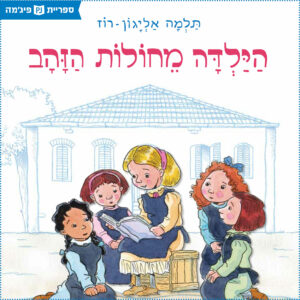 The Girl From The Golden Sands
The Girl From The Golden Sands 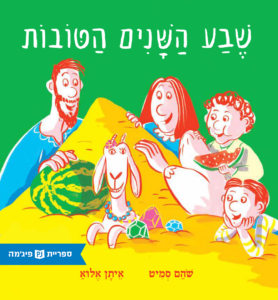 Seven Good Years
Seven Good Years 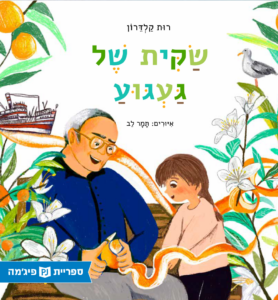 A Bag of Longing
A Bag of Longing 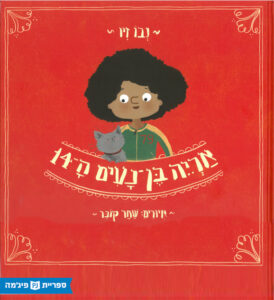 Arie Ben Naim XXIV
Arie Ben Naim XXIV 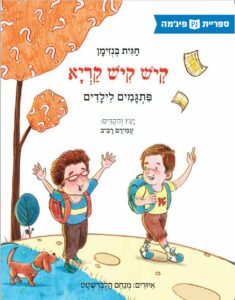 Kish Kish Karya: Proverbs for Children
Kish Kish Karya: Proverbs for Children 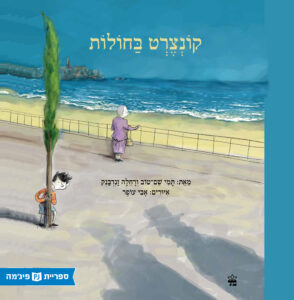 A Concert in the Sand
A Concert in the Sand 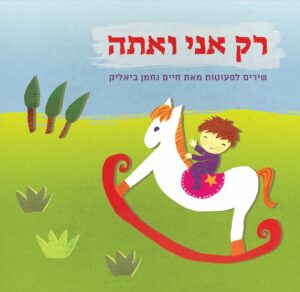 Just You and Me: Songs for Toddlers by Bialik
Just You and Me: Songs for Toddlers by Bialik 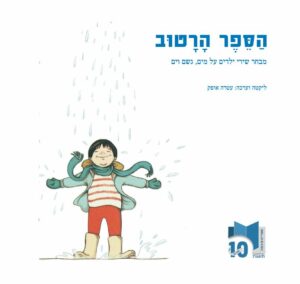 The Wet Book
The Wet Book 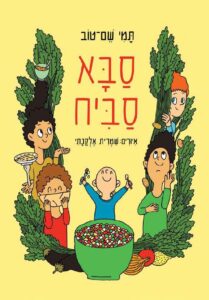 Sabba Sabich
Sabba Sabich 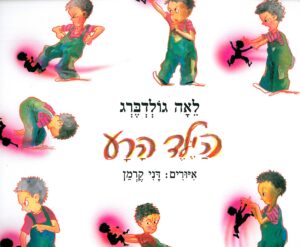 The Naughty Boy
The Naughty Boy 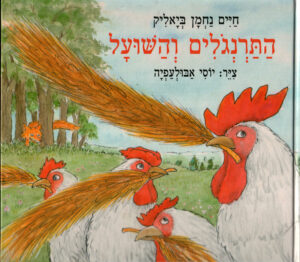 THE CHICKENS AND THE FOX
THE CHICKENS AND THE FOX 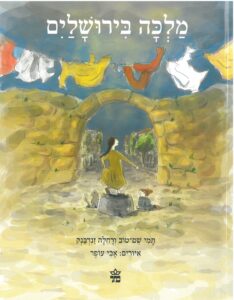 Malka, a Queen in Jerusalem
Malka, a Queen in Jerusalem 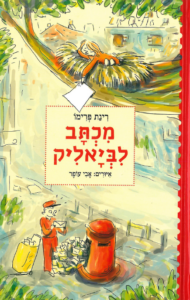 letter to Bialik
letter to Bialik 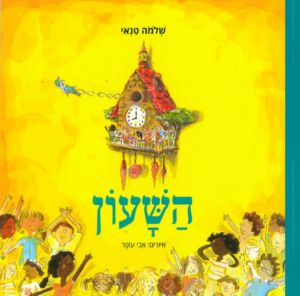 The Clock
The Clock 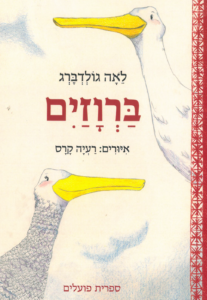 Two Ducks
Two Ducks 


